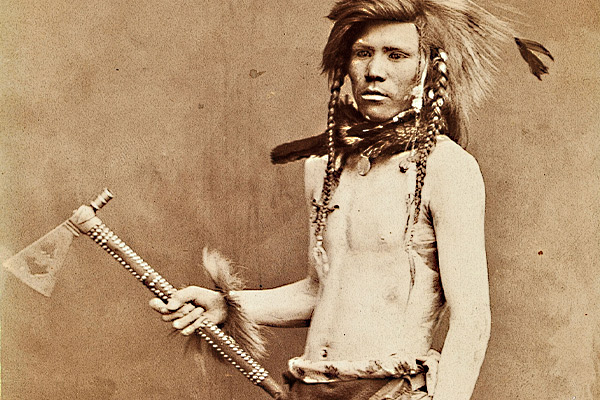

The Army struck the headwaters of the Rosebud and marched downstream. The Indian allies who had been moving on the flanks now took the lead, with their medicine men well in advance. On June 17, with extreme caution, they marched into the Rosebud country.


Crook turned north into Montana, halted late in the afternoon, and bivouacked for the night. They met no opposition from the Sioux, but returning scouts reported that they had found the trail of a large village moving north. Crook had mounted his infantry on mules from the supply wagons to give his corps greater mobility. Moving west, the Army crossed the Tongue River early in the forenoon of June ifi. Also, both he and Washakie had agreed that the Shoshone horses would benefit from a day’s rest. He wanted to strengthen his present position so that he could leave his wagons there under light guard. Crook decided to postpone his march one more day. Washakie requested a detail of soldiers to be attached to his braves, so that the rest of the Army would not mistake them lor the enemy. He asked only that they maintain contact with him at all times. Both pointed out that they had more experience in fighting the enemy and preferred their own methods. Washakie promised to join Crook and the Crows in council immediately, mounted his war horse, and followed his men.Īt the council of war the Shoshones and Crows insisted that in the forthcoming campaign they be allowed to operate separately from the Army. Then he barked a command and the still-stiff line, with clockwork precision, swung into fours and trotted smartly off. Washakie asked where his warriors were to be quartered. Here he was-having come 160 miles and across two mountain ranges from Fort Washakie-dignified, proud, and anxious to support his white friends. It was hard for Crook to realize, despite the snow-white hair that hung down over his shoulders, that this Indian was over seventy years old. Washakie dismounted and warmly took Crook’s extended hand. The troops who had gathered at the alarm call cheered, and the Crows gave their ancient enemy a fierce cry of welcome.
#Was the shoshone tribe warlike or peaceful full#
They were stripped to the waist, in full war paint, and decorated with brass and feather ornaments. Besides lance, shield, and pogamoggan (war club), every one carried a repeating rifle and a revolver. At a sharp command from their leader, the long column swung into a parade front and halted.Įyewitness accounts do not agree as to numbers, but there were between yo and 160 superbly mounted warriors in that long, stiff line. Every warrior carried a glittering lance ornamented with a small pennant. This bearer was Hanked by two horsemen who broke out huge American flags as they approached the camp. One lone man on a magnificent pinto rode in the lead: another followed, carrying a long staff topped by an oriflamme of eagle feathers. A large body of horsemen, in smart columns of lours, was rushing down the steep slope from the west. Then, over the noises of the heavily fortified camp, Crook heard the alarm call sound. Washakie had never broken his word yet, and he had promised to join Crook with the best of his fighting men-but where was he/ Crook was determined to move the next day, without the Shoshones if necessary. Now they had ottered the Army full co-operation against their common enemy, the Sioux. The Shoshones under Washakie had ended their old feud with the Crows two years previously. Two hundred Crows under Old Crow, Medicine Crow, and Good Heart had arrived that afternoon. He planned to cross the Tongue River the next day. In three hot skirmishes on the march from Fort Fetterman, Crook had acquired a deep respect for the warriors from the Rosebud and their allies.Ĭrazy Horse had sent word that “every soldier who crossed the Tongue River would die,” and though Crook had the strongest force ever seen on the Irontier, lie knew that he would need Indian reinforcements. They outnumbered him four to one and they were well armed. Crook, with eleven hundred cavalry and infantrymen, was campaigning against a determined alliance of Sioux, Chcyennes, and Arapahoes led by Chief Crazy Horse. The place was near Sheridan, Wyoming Territory, June 14, 1876. From the opening of his tent he could have seen the wide stretch of sagebrush-covered hills to the west over the willow bottoms of Goose Creek, but he was tired of looking at it.

General George Crook, United States Army, angular and bearded, resisted the impulse to consult his watch again.


 0 kommentar(er)
0 kommentar(er)
